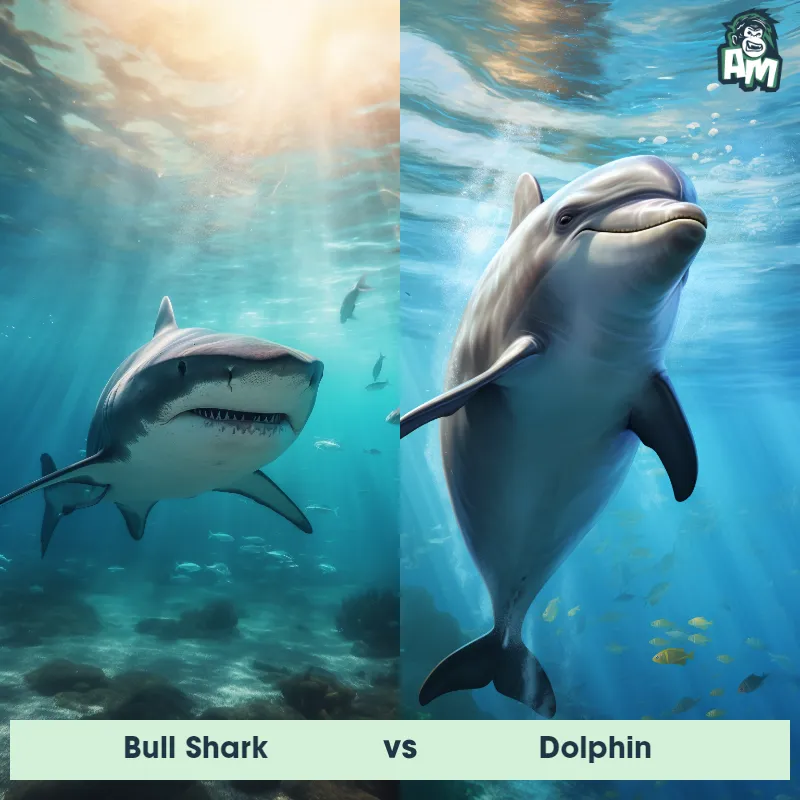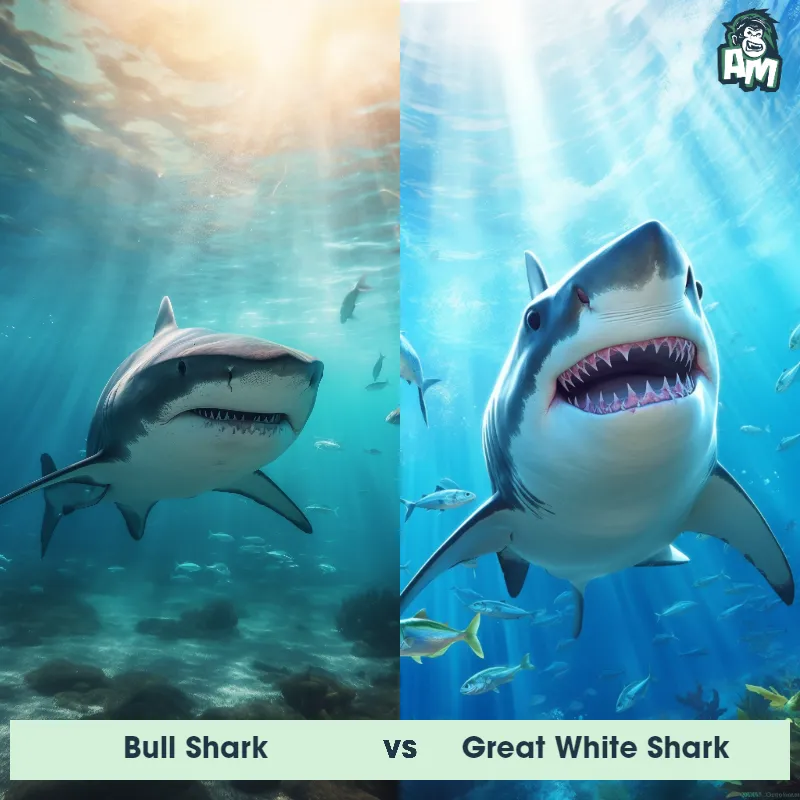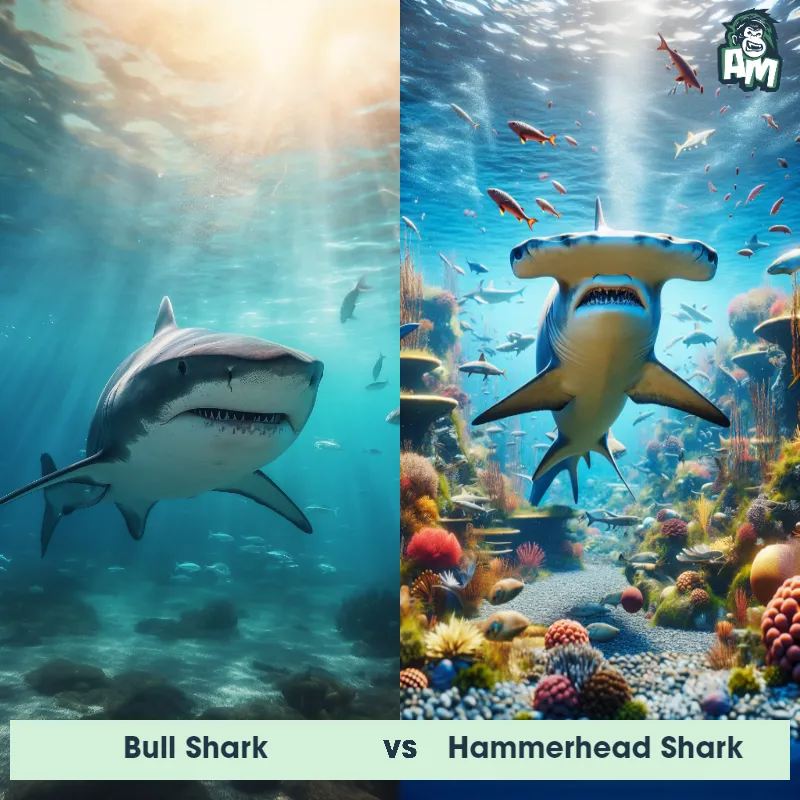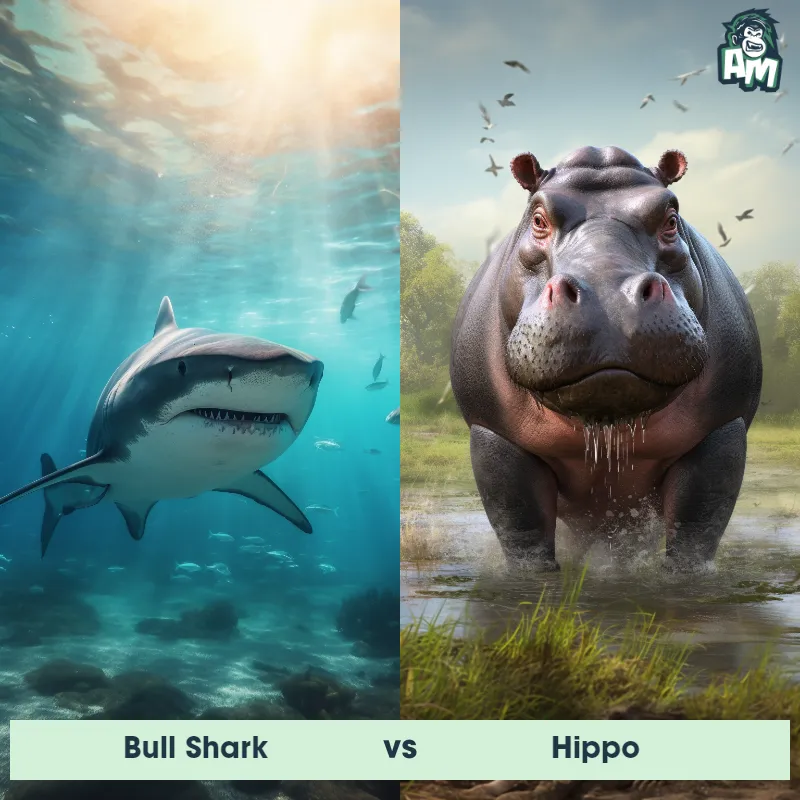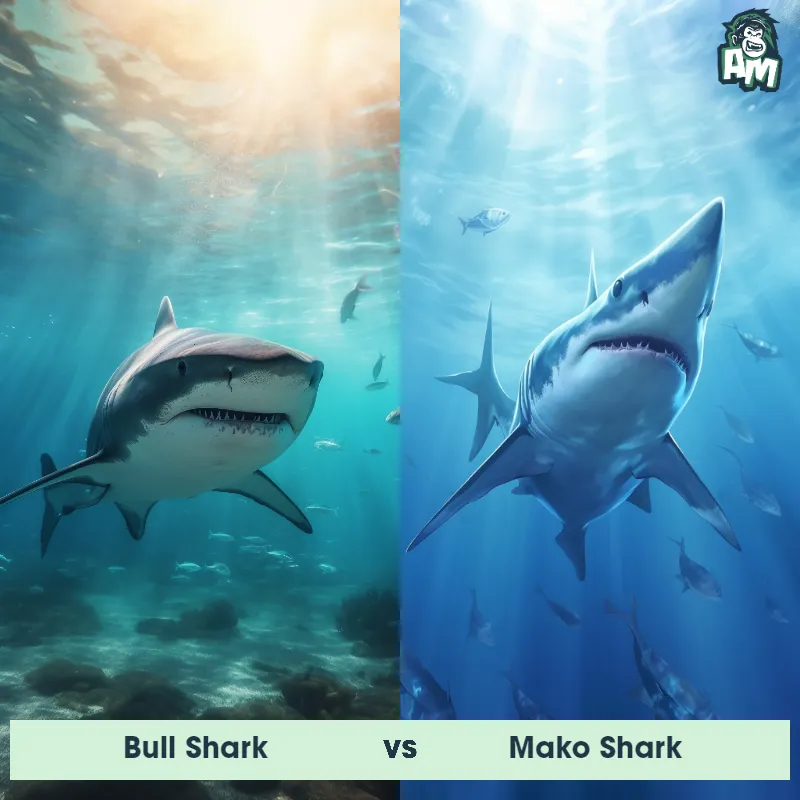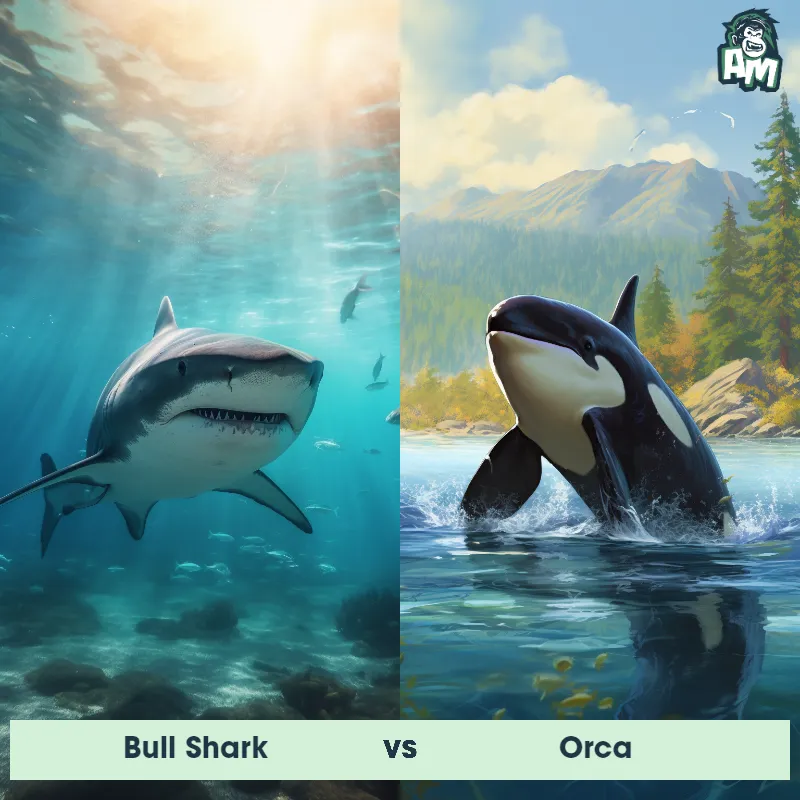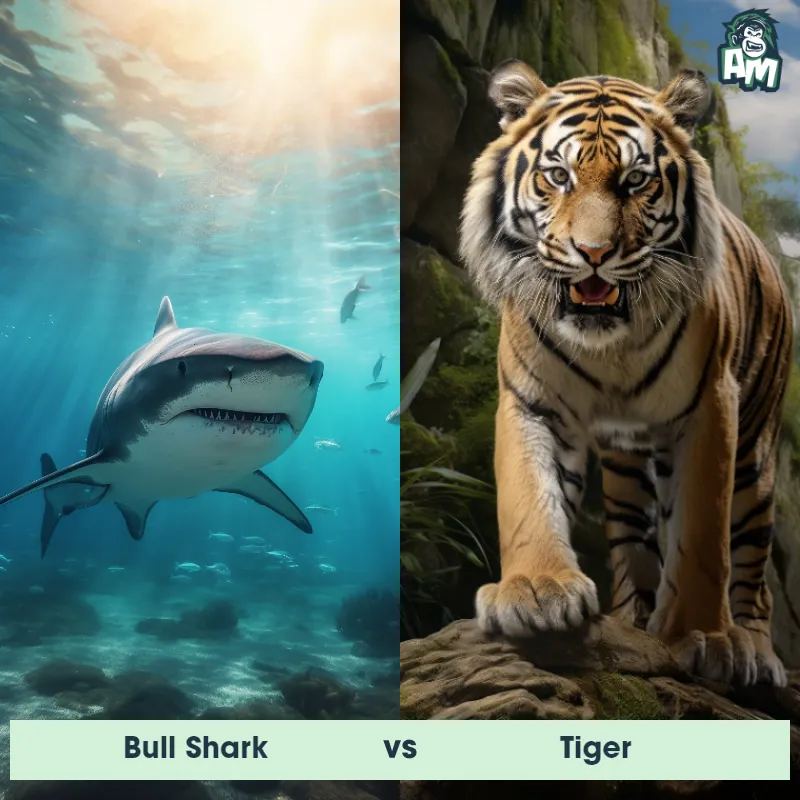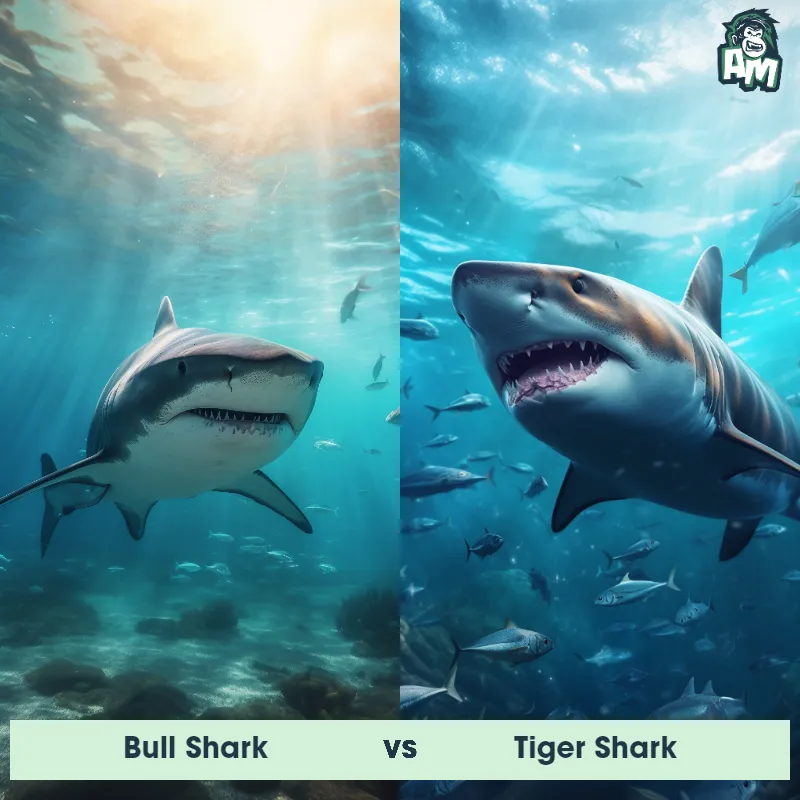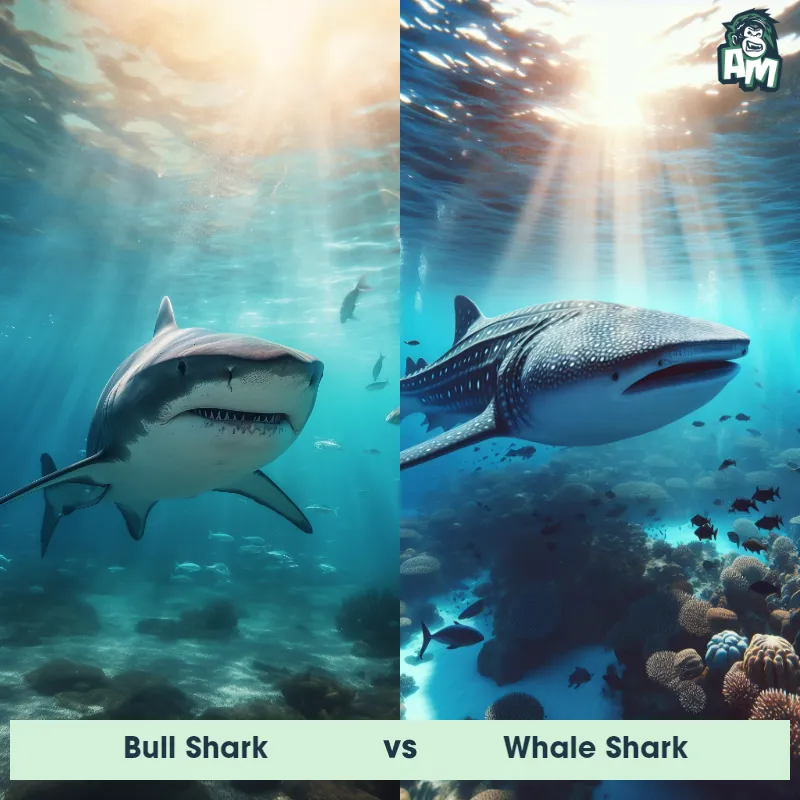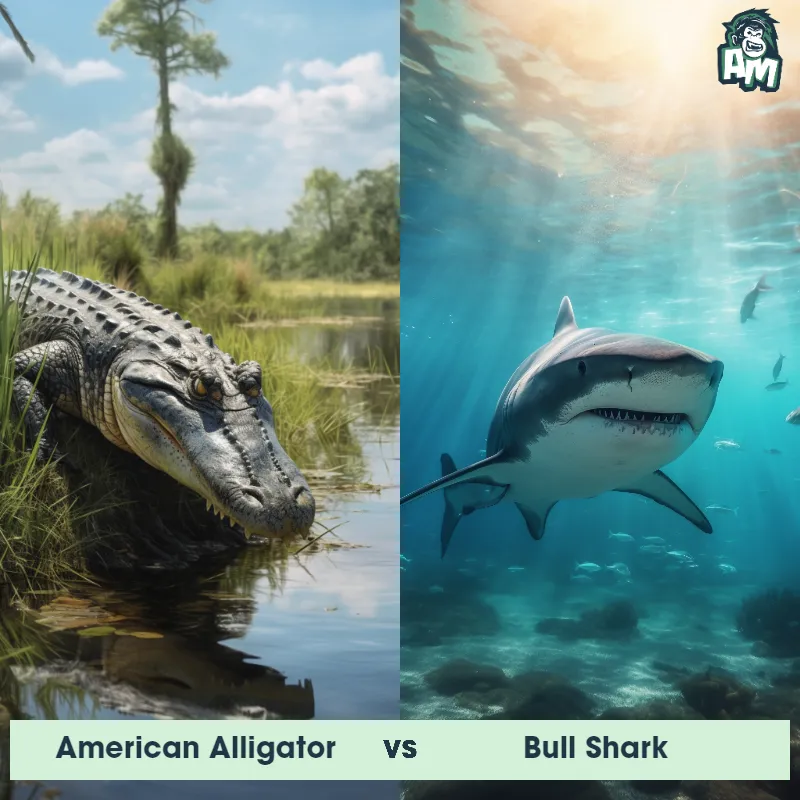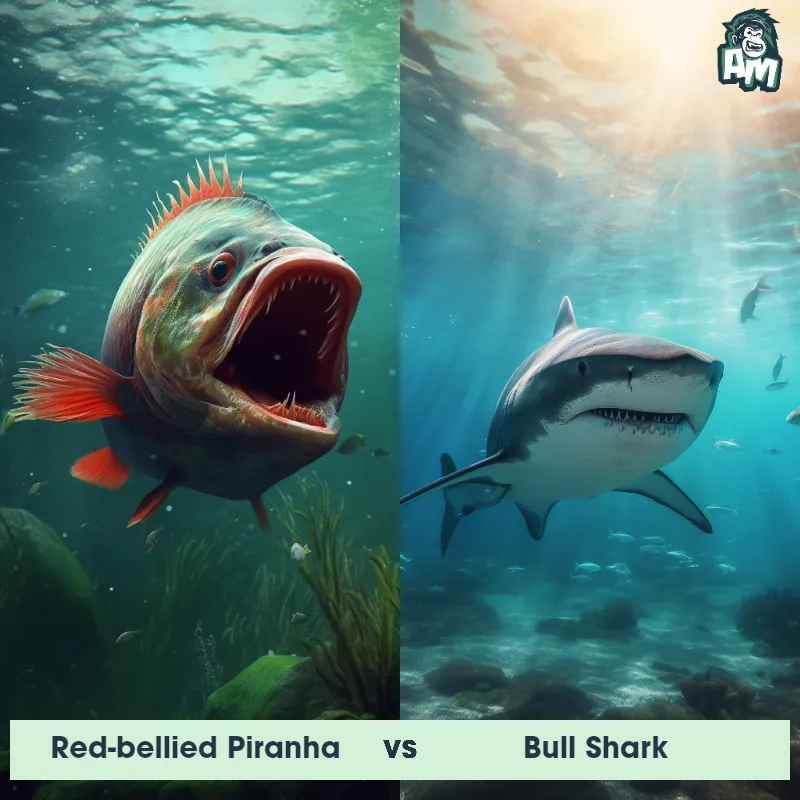The Bull Shark
The Bull Shark, scientifically known as Carcharhinus leucas, is a stout and powerful shark species that can be found in warm coastal waters around the world. It is named after its stocky shape and aggressive nature. Bull Sharks have a broad, triangular-shaped snout and small eyes. They are gray to gray-brown in color on their dorsal side, fading to a lighter shade on their ventral side. These apex predators can reach lengths of up to 11 feet and can weigh up to 500 pounds. Bull Sharks are known for their ability to tolerate both saltwater and freshwater environments, and they are often found swimming in estuaries, rivers, and even freshwater lakes.

| Bull Shark | |
|---|---|
| Size | Up to 11 feet (3.4 meters) |
| Weight | Over 500 pounds (227 kilograms) |
| Speed | Speed: 25 mph (40 km/hr) |
| Key Strength | Powerful bite force and aggressive behavior |
| Biggest Weakness | Vulnerable to attacks on the gills and eyes |
| Scientific Name | Carcharhinus leucas |
| Family | Carcharhinidae |
| Habitat | Warm coastal waters and freshwater rivers |
| Geography | Found worldwide in tropical and subtropical regions |
| Diet | Carnivorous, feeding on fish, dolphins, turtles, and other sharks |
| Lifespan | 12 years - 16 years |

The Bull Shark
The Bull Shark, scientifically known as Carcharhinus leucas, is a stout and powerful shark species that can be found in warm coastal waters around the world. It is named after its stocky shape and aggressive nature. Bull Sharks have a broad, triangular-shaped snout and small eyes. They are gray to gray-brown in color on their dorsal side, fading to a lighter shade on their ventral side. These apex predators can reach lengths of up to 11 feet and can weigh up to 500 pounds. Bull Sharks are known for their ability to tolerate both saltwater and freshwater environments, and they are often found swimming in estuaries, rivers, and even freshwater lakes.
Fun Fact: One interesting fact about Bull Sharks is that they are known for their ability to swim in freshwater rivers and lakes, unparalleled by most other shark species. They can tolerate low salinity levels due to a unique salt-excreting gland that enables them to maintain the osmotic balance in their bodies regardless of the water they inhabit, allowing them to venture inland far from the ocean.
| Bull Shark | |
|---|---|
| Size | Up to 11 feet (3.4 meters) |
| Weight | Over 500 pounds (227 kilograms) |
| Speed | Speed: 25 mph (40 km/hr) |
| Key Strength | Powerful bite force and aggressive behavior |
| Biggest Weakness | Vulnerable to attacks on the gills and eyes |
| Scientific Name | Carcharhinus leucas |
| Family | Carcharhinidae |
| Habitat | Warm coastal waters and freshwater rivers |
| Geography | Found worldwide in tropical and subtropical regions |
| Diet | Carnivorous, feeding on fish, dolphins, turtles, and other sharks |
| Lifespan | 12 years - 16 years |
Bull Shark Matchups
We use AI to simulate matchups between the Bull Shark and other animals. Our simulation considers size, strength, and natural predatory behaviors to determine the most likely outcome.

Can't find the Matchup you want?
Create Your Own MatchupBull Shark: Diet, Predators, Aggression, and Defensive Behaviors
What do Bull Sharks eat?
Bull sharks are opportunistic feeders with a diet consisting of a wide variety of prey. They primarily feed on fish, including bony fish, rays, and smaller sharks. Additionally, they are known to consume crustaceans, mollusks, and occasionally dolphins or sea turtles. Their powerful jaws and sharp teeth enable them to efficiently prey on different animals in various marine environments.
Do Bull Sharks have any predators?
As apex predators in their habitat, Bull Sharks do not have many natural predators. However, larger sharks such as tiger sharks and great white sharks may occasionally prey on them. Additionally, Orcas (killer whales) have been known to target and consume Bull Sharks in some areas.
Are Bull Sharks aggressive?
Bull Sharks are often considered one of the most aggressive shark species due to their territorial nature and high testosterone levels. They are known to exhibit aggressive behaviors, especially in areas with murky water or when they feel threatened. While attacks on humans are relatively rare, Bull Sharks have been responsible for several incidents due to their aggressive tendencies.
Do Bull Sharks fight with other animals?
Bull Sharks are known to engage in competition and fights with other predators over food and territory. They are highly territorial and will fiercely defend their space if another shark, especially a male Bull Shark, attempts to encroach upon it. Dominance battles among Bull Sharks can involve aggressive displays, posturing, and ultimately physical confrontation.
How do Bull Sharks defend themselves?
Bull Sharks rely on their impressive physical attributes to defend themselves against potential threats. Their muscular bodies, powerful jaws, and sharp teeth serve as effective weapons against predators or rivals. When feeling threatened, they may exhibit aggressive behaviors such as rapid movements, aggressive posturing, and biting if necessary.
What is the biggest weakness of Bull Sharks in a fight?
Despite their formidable reputation, Bull Sharks have a vulnerability in their gill slits, which are located on the side of their head. These openings are crucial for their respiration process and are relatively exposed during confrontations with other predators. A well-aimed strike to the gills can incapacitate a Bull Shark and make them vulnerable in a fight.
Fun Fact: Bull Sharks are considered one of the most aggressive shark species, and they are responsible for the majority of shark attacks on humans. They have a territorial nature and are known to be highly curious and opportunistic feeders, which can sometimes lead to interactions with swimmers, surfers, or people engaged in water-related activities near their habitats.
Fun Fact: Unlike many other shark species, Bull Sharks are viviparous, which means they give birth to live young. After mating, the female Bull Shark carries the developing embryos in her body, nourishing them through a placenta-like structure called yolk sac placenta. The gestation period typically lasts around 10 to 12 months, and a litter of up to 13 pups is born. This reproductive adaptation allows Bull Sharks to give birth to fully formed and relatively large offspring, increasing their chances of survival from the moment they are born.



